It could be much easier if you focus on your goals and what you expect from one or another web framework (e.g. its performance capabilities, learning curve, development speed, etc.). As a business owner, you probably want to see your project as a profitable and solid player on the market for years and at least get a return on investment.
After reading this article, you'll have a solid base of knowledge, with which you can easily decide, which framework is better for your business: Laravel or Rails. We are going to look at both of these frameworks from different corners, leaving every stone unturned. We'll begin with a short introduction, so we can understand the background of Rails and Laravel, learn about fresh trends, review their performance, learning curve, tools, and community.
So, let's proceed with our in-depth comparison Ruby on Rails vs Laravel!
What is Ruby on Rails?
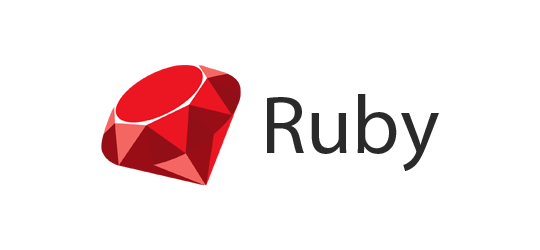
Ruby on Rails, or just “Ruby”, is a big invention, provided by David Heinemeier Hansson, who is a quite interesting person. Not only because he invented one of the most popular web frameworks in the world, but he is also a former “24 Hours of Le Mans” car racer. He was one of the first few people that had commissioned the Pagani Zonda HH supercar. However, let's focus on Rails!
Basically, Rails is an extension of the Ruby programming language. From the technical point of view, it is a package library that can be installed with the command-line interface of your operating system. You can easily use Rails for building websites. You can notice that it has a simple maintenance and collaboration because of the established convention. How is it possible? Rails API is just codified as these conventions! API is the application programming interface, or code control directive. It comes with a detailed documentation online, as well as supported by a wide range of articles, blog posts, and even books. Basically, if you learn Rails, you learn its API and how to use its conventions. Rails combine JavaScript, CSS, and HTML with a Ruby language and running your web app on a web server. Due to this fact, Ruby on Rails is considered a back-end web app development platform.
What is Ruby on Rails Used For?
“Convention Over Configuration”
Ruby on Rails is a web framework that is used to create dynamic websites with a complex structure that will change depending on the user's activity. We are not talking about blogs (however, there are a lot of blogs built on RoR). You are probably already familiar with some websites that build with Ruby on Rails, like Airbnb, Groupon, Hulu, Kickstarter, and Soundcloud. And these websites are just a few big players. According to datanyze.com, more than 5% of the top 10k websites on the web use Ruby on Rails.

Another notable thing about this framework is that it is widely used by young companies and startups. A large share of them was started about 10 years ago, succeed hundreds of millions over the lifetime and now they are big players in their own niche.
Let's play a little game, to get the idea of Ruby on Rails. We're going to switch into the physical world! Say you want to make your own ice cream factory. You have a great idea and prescription, you understand your market and how to promote your ice-cream, including connections among retail groups. But, you have no idea how the factory actually works. All these steam machines, blueprints, these pushy engineers are really scary. All you want to do is just to focus on your product and the way you bring it to your users. When it comes to building your factory, the difficulty is that there is no standard template for doing this, because every factory is different. All you need is to get something that will work and meet your requirements. So you start looking for a way to do this, and find a construction company called Ruby & Sons that can deal with your problem.
Now imagine that we are talking about the product that comes with a web application. You don't have a time or skills (or both) to care about its background or reinvent the wheel. You are focused on the concept and the way you bring your product to the user, and that's where you're good at. That's why people choosing Ruby on Rails. With it, you can make a workable blueprint, which you can bring to programming team to plug in and make a simple version №1 of your web app. After that, you can easily modify and update your web app in accordance with its concept and performance capabilities.
Advantages and Disadvantages of Ruby on Rails
Just like any other web framework, Ruby on Rails comes with its own advantages and disadvantages. Let's take a look at them.
When Ruby on Rails makes your day
Libraries. You can use a 3rd party module called “gem” to do anything you want. You can find these gems easily as they are publicly available;
Code and its quality. In accordance with different reviews, feedbacks, comments, and tests, we can say that the quality of third-party Ruby code is definitely higher than NodeJS or PHP equivalents;
Toolkit. Ruby on Rails comes with a spectacular set of tools that will help you implement more features in a short time, including a built-in structure for web applications;
Community. Undoubtedly, every city that has electricity and the Internet also has its own Ruby community. It is also one of the most popular programming languages on GitHub;
Next Generation Language. A big number of online code schools prefer Ruby on Rails, like CodeAcademy and Steer. That means that you can expect a talented increase in the Ruby community in a few years;
DRY philosophy. The Don't Repeat Yourself principle that gives you a clear separation of occurring issues and makes your application maintainable;
MVC philosophy. Due to Model-View-Controller, your application can be extended and new features can be added, no matter if your app is simple or frustratingly complex.
If you are looking for a good example of how Ruby on Rails works, take a look at GitHub. This repository of source code is righteously considered to be the largest one in the world, with a complex architecture and tons of different features that work together like a Viennese orchestra. Ruby on Rails is the Chief conductor of that orchestra.
When Rails is Not That Good
Runtime speed. Yep, that's the weakest point of Rails and it's kinda slow. Despite the fact that the significance of runtime speed partly depends on what kind of project you are working with. In most cases, significance of server architecture, database, IO, and engineering team is far above;
Wrong decisions = heavy expenditures. In the case of Ruby on Rails, wrong architecture decision could be really expensive outgoing. It is an open-source framework, where each component is interrelated, and if you make a mistake that affects the structural construction, it will be quite hard to fix;
Documentation. Despite the fact that documentation is everywhere, the quantity and quality balance is disturbed. That is obvious when it comes to the less popular libraries and gems and that's why it is heavy to use them properly in mixins, which is really important when you work with Rails;
Multithreading. It could be tricky, because, despite the fact that Rails supports multiple threading, some of its IO libraries don't, because of the global interpreter lock. In this case, you may face some performance issues, caused by multiple requests over active requests.
Well, I guess we've learned enough about Ruby on Rails. So let us look at Laravel for now!
What is Laravel?

Laravel is a PHP web framework. It is a free, open-source framework with which you can build web apps in accordance to MVC pattern (just like Ruby on Rails). Notable features: modular packaging system that comes with a dedicated dependency manager, the variety of ways for accessing relational databases, useful utilities that help in application maintenance and deployment.
The creator of Laravel is Taylor Otwell. If you are looking for a source code of Laravel – you can visit GitHub, where it contains. By the way, it is licensed by MIT. Let's take a look at some rates:

As we can see, Laravel holds 1.94% market share with 10,390 current websites. Certainly, it has a strong position in the market. But why is it so popular? In the past, it was just a promising project, but today it is the leader of PHP-crew. It is open-source, comes with a user-friendly interface, expanded functionality and works with MVC architectural model. One doesn't simply choose a right one PHP framework to develop a web app for your business, because of space of variations of available options. We're going to take a look at the main features of Laravel and where you can implement them for your business.
What is Laravel Used For?
Basically, Laravel comes with a simple and elegant syntax and aimed to take your pain out of development and make common tasks easier (such as sessions, routing, and authentication). The architecture is unique, with which you can create your own structure that is designed exactly for your application. Sites like Startups, Toyota Hall of Fame, WatchSeries, are a good example of how Laravel works. According to Github, Laravel is now the world's most popular web framework!
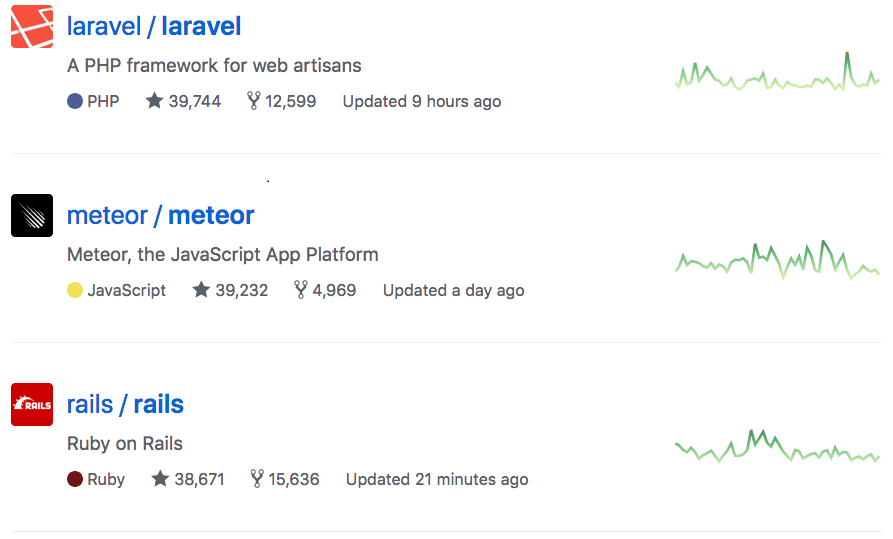
It is a framework where you can do whatever you want. It is easy to learn, create a simple API as well as develop a complex app. Its Eloquent ORM can simplify your work with classes.
All you have to do is just to read the code and understand what is going on exactly. Laravel code feels more like a message than a code. For example, you can render a view or use it just as a mail message body.
Just like its younger sisters Symfony and Zend, Laravel is composer based. This means that you can use the composer in order to use its components. This PHP framework can help you improve your development.
Advantages and disadvantages of Laravel
Like any other framework, Laravel comes with its own strengths and weaknesses, let's take a look at few of them:
When Laravel works well:
Authentication. It is a really important part of any web app, and you have to spend tons of time writing this code. In Laravel 5 it is even simpler than before;
Modularity. It is the degree, and the system's components can be separated and recombined in accordance to this degree. Thus, you can split the business logic into separate parts that belong together;
Application logic. Laravel gives a developer its flexibility that they need to create anything that comes in your head: from extremely small sites to enormous enterprise apps.
Caching. It is obviously necessary, and Laravel comes with a tool that will keep your app fast and responsive;
When Laravel doesn't work
It may cause problems if used for deploymenton shared hosting;
Because of a big number of database queries may slow down app's performance;
It doesn't support payment feature, so it can be a problem for e-commerce development. However, it comes with libraries that allow developer to integrate payment methods;
A lack of functionality from the perspective of mobile application development, because of the fact that server acts more like a classic website loader.
So, looks like we get the idea of what is Laravel and what is Ruby on Rails. Now we can compare them!
Ruby on Rails vs Laravel: Which One is Better for Your Project?
We know that Rails and Laravel are both good web frameworks, they are widely used all around the world. But where they are used exactly? Keep in mind that Laravel is flexible, comes with tons of features that could work the way you want, but Rails can fulfill your application with richness and unique approach in dozens of different ways.
From the Perspective of Ruby on Rails
Ruby on Rails provides its unique magic to the backend of your web application. Let's take a look at chart so we can understand it better:
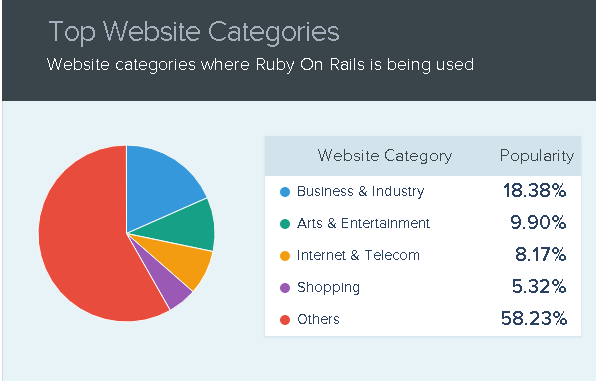
As we can see, Ruby on Rails is widely used in Business & Industry segment. Moreover, not just “widely used”, but twice as much as Arts & Entertainment, not to mention Internet & Telecom, Shopping, and Others. Is that supposed to mean that if your project is related to business or industry - it is the only way of implementation of Ruby on Rails? Of course not! However, it will be easy to find RoR developer who has extensive experience in this area.
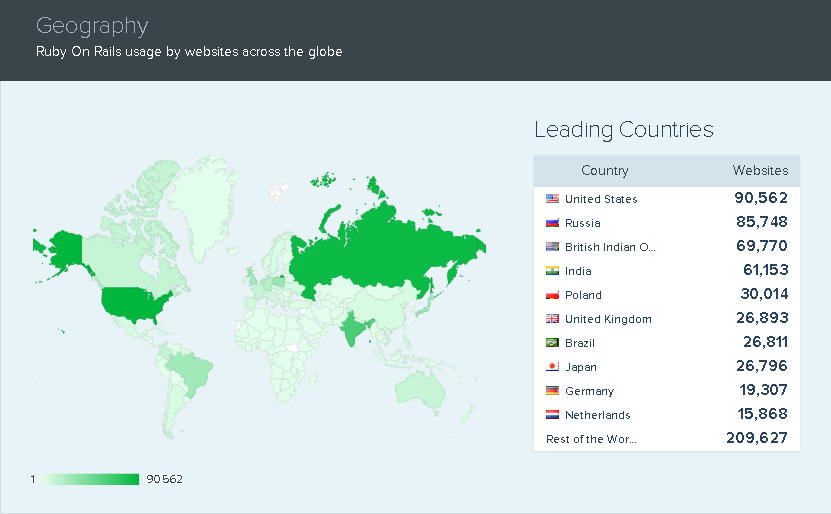
Ruby on Rails is mostly used in the United States and Russia.
From the Perspective of Laravel
Laravel provides you with the most valuable currency called time. With such community and libraries, you can save your time and money and build an operational web application!
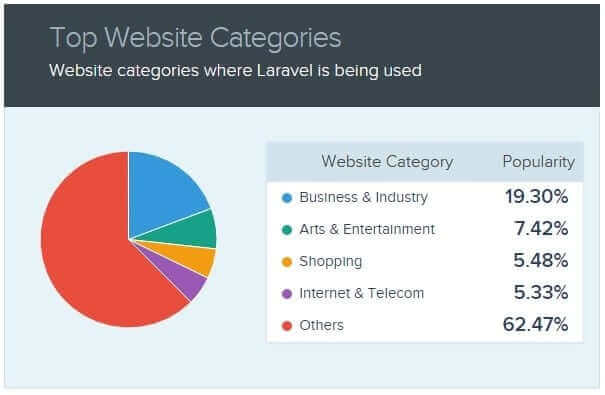
Looks like Laravel is widely used in Business & Industry, and the share is even denser than in case of Ruby on Rails. However, it is pretty popular in other projects as well.

Laravel is commonly used in the United States, Netherlands, and Russia, so if you are looking for a good developer, who works with Laravel, keep in mind these countries.
Companies Using Laravel and Rails
The best way to understand anything is a single glance at the illustrative example! There are a lot of companies using Laravel and Ruby on Rails. However, web applications they get differed in accordance with the needs of these companies. So, let's check them out right now!
Companies using web applications built with Ruby on Rails
Airbnb. It is an example of a booking website for travelers. It is flexible, user-friendly, very intuitive and easy to use;
CrunchBase. It's like Wikipedia of different startups. Its back-end is written on RoR. Page caching performed with Varnish;
Ask.fm. A popular Q&A website. Here, users from different countries can ask an anonymous question to different people;
Dribbble. It is a good example of a design directory. As a designer, you can present your work, share opinions, and more;
SolarisBank. Because of a wide range of APIs, users can gain access to its modular services, including e-money, lending, payments, and tons of features provided by third-party providers. This is an example of a masterpiece in terms of the technological banking system for digital companies, fintech, and corporations.
Companies using web applications built with Laravel
Laracast.com. If you want to learn Laravel, the best e-learning tool should be built on Laravel! This startup gained a huge popularity;
Globaldietarydatabase.org. This application was developed at the University of Nutrition Science and contains a huge database relevant to diet and nutrition, provided by dozens of health ministry around the globe;
Startups.co. This platform was created in order to help launch the startups, it is built with Laravel as well. Here you can find funding, clients, press and more;
Toyotahalloffame com. This website is sponsored by Yahoo and Toyota. Its purpose is football players nomination in the worldwide hall of fame;
Invictawatch com. It is an e-commerce website development startup that is built with Laravel with catalogs, images, videos, and description.
Now we can see the picture! But what about open-source projects that are worth drawing attention and represent the capabilities of our frameworks?
Notable Open-Source Laravel And Rails Projects
If you are not familiar with the subject, the open-source project is software, which source code can be inspected, modified and enhanced by anyone. Such projects are really helpful when a developer wants to improve his skill or get the better understanding in case if he wants to learn a new framework. I already mentioned some of the notable open-source projects built with Laravel in the previous article, as well as projects built with Ruby on Rails. If you are interested in this subject, you can learn about these projects by following the links!
The Bottom Line
All you have to do is just to remember that it is not so easy to decide, which one framework is better for your project, but that's ok! I hope that this article helped you in the selection of framework for your project. The last summary of items:
Ruby on Rails:
Quickly get your application from development to market;
You can find a skilled developer without delays;
Large community;
Laravel:
Huge developer pool;
Simple solutions;
Large knowledge base;
A lot of different tools;
Easy to pick up.


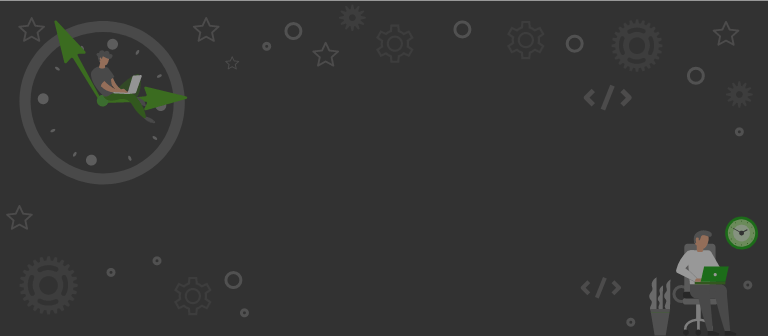
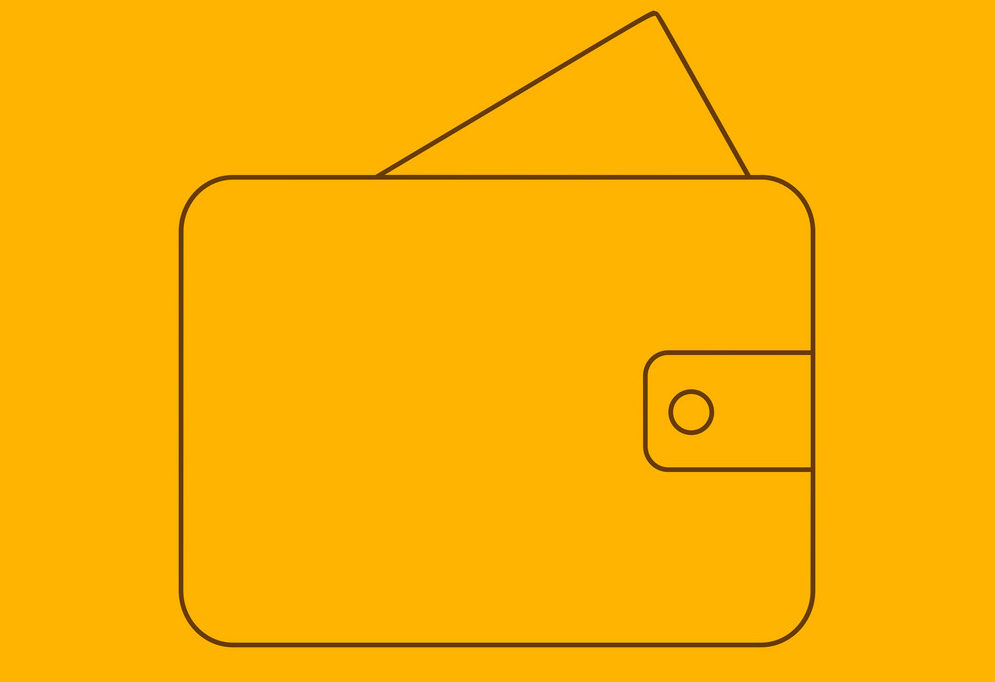
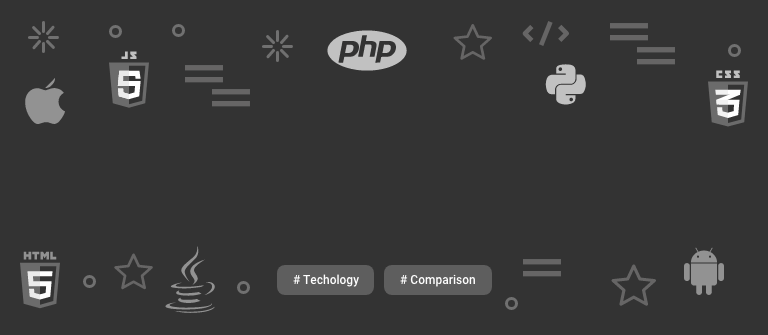



 UA, Kyiv, Business Centre Gulliver
UA, Kyiv, Business Centre Gulliver

Comments
Leave a comment